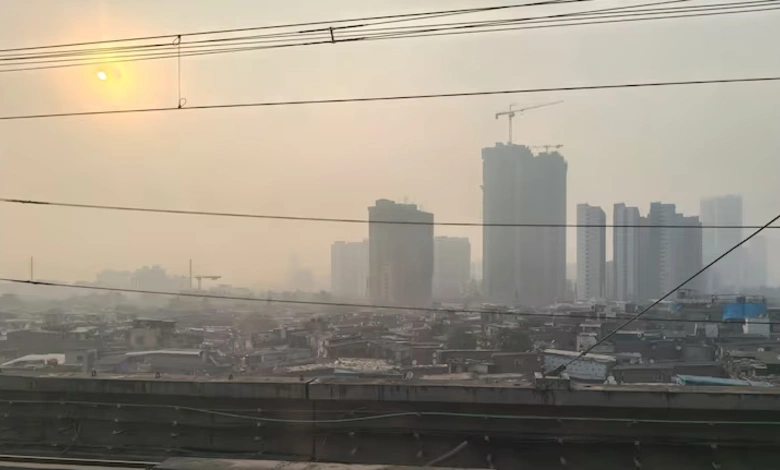Mumbai – Residents of India’s financial capital are grappling with an escalating air pollution emergency, as hazardous smog engulfs key suburbs and pushes the city’s overall air quality into alarming territory. Echoing the severe conditions plaguing Delhi-NCR, the metropolis has seen a rapid deterioration, with morning fog slashing visibility and exposing millions to toxic fumes.
The gravity of the crisis, noting that the polluted air now rivals the health toll of smoking several cigarettes daily. On Wednesday, air quality indices (AQI) in Malad West soared to 308, while Borivali East registered 303 – both well into the “very poor” to “hazardous” range, exceeding the 300 threshold that signals immediate health dangers. The city’s average AQI worsened dramatically from 172 to 198, teetering on the brink of the officially designated “poor” category.
At the heart of the peril lies a dramatic rise in PM2.5 levels, the ultrafine particles notorious for infiltrating lungs and entering the bloodstream, exacerbating respiratory and cardiovascular issues. Data from Wednesday paints a stark picture: PM2.5 concentrations spiked to a peak of 200 micrograms per cubic meter in isolated hotspots, with an evening average of 150 across Mumbai. This equates to inhaling the equivalent of smoke from six to seven cigarettes per day for the average person.
ALSO READ : 17 Years On, Mumbai Honors the Unforgettable 26/11 Attack
Hotspots extended beyond the suburbs, with Mulund and Powai recording PM2.5 between 150 and 200, Borivali at 180, and Malad lingering around 150. Even Andheri, typically less affected, averaged about 100 – still far from safe. Against World Health Organization guidelines capping safe 24-hour PM2.5 exposure at 15 µg/m³, and India’s national standard at 40 µg/m³, these readings represent four to ten times the allowable limits, underscoring a breach of basic public health safeguards.
In response, the Brihanmumbai Municipal Corporation (BMC) has ramped up enforcement against a prime culprit: construction dust. The civic authority unveiled a comprehensive 27-point protocol for building sites, mandating controls on debris dispersal, on-site dust suppression, and material transport to curb airborne particles. Violations now prompt swift digital notifications to developers, with replies handled online for efficiency. While the BMC has yet to reveal the number of penalties issued, the move signals a proactive clampdown amid mounting public outcry.
As winter winds stall and urban activity intensifies, experts warn that without broader interventions – from traffic curbs to industrial emissions checks – Mumbai’s air could remain a choking hazard for weeks. For now, citizens are urged to limit outdoor time, use masks, and monitor real-time AQI via official apps, but the pall of smog serves as a grim reminder of the city’s environmental vulnerabilities.
